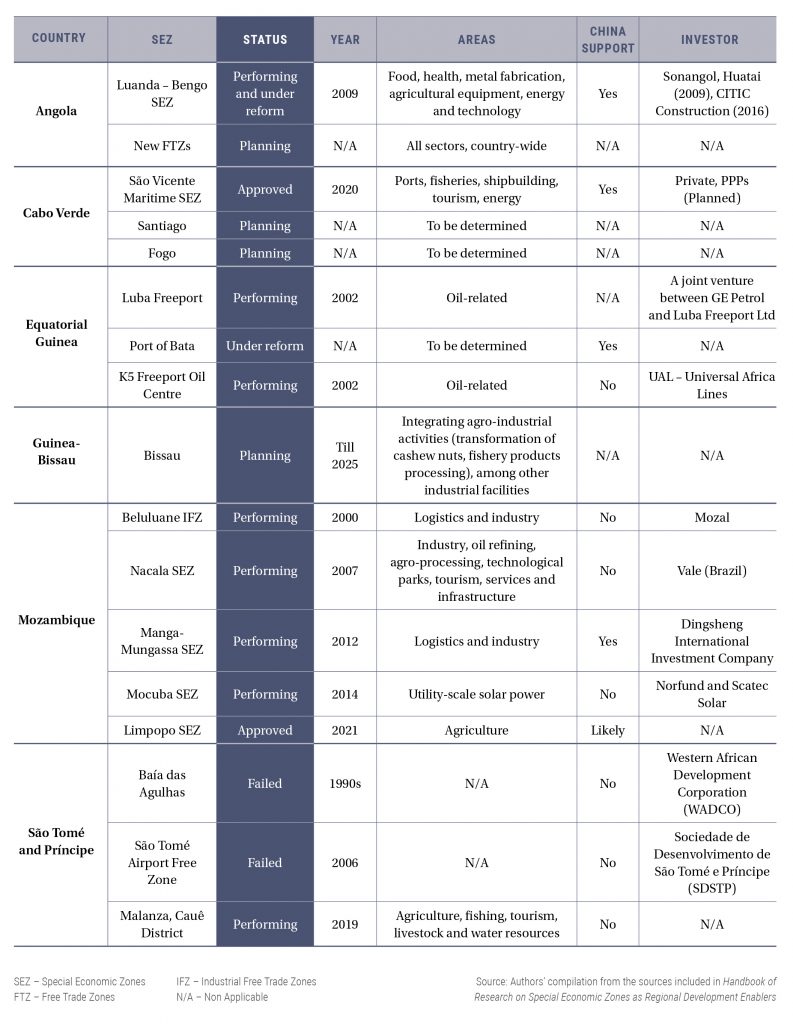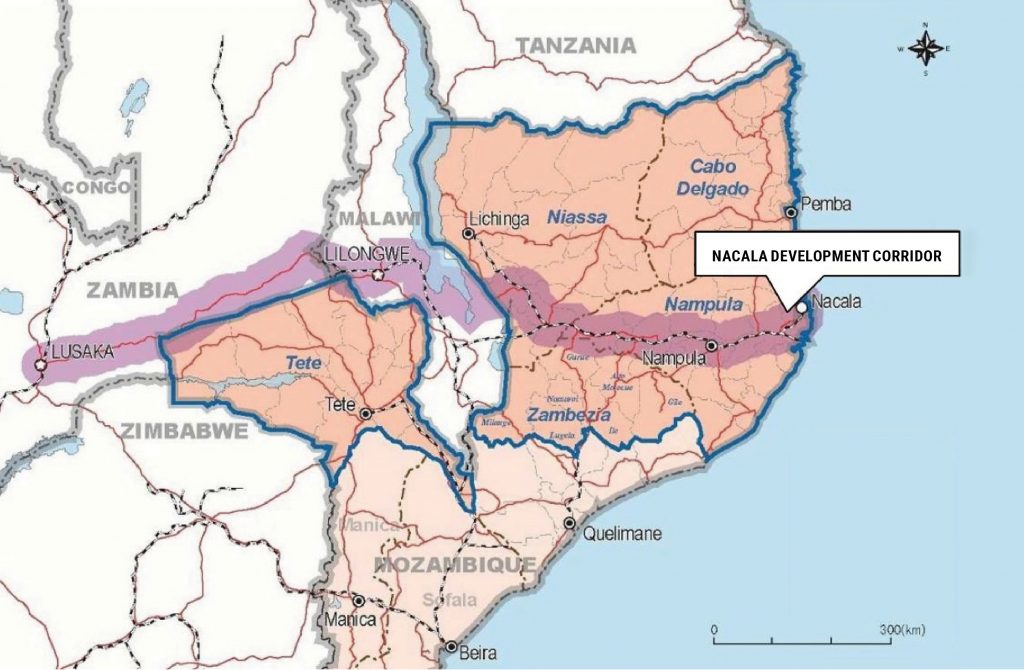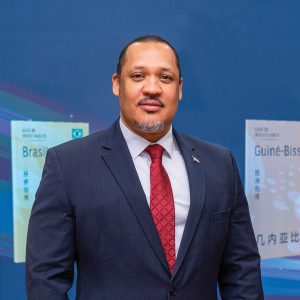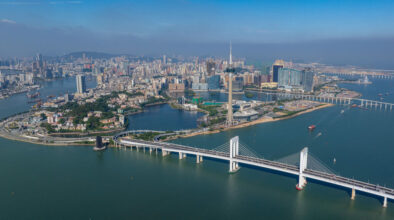Portuguese-speaking countries (PSCs) in Africa are looking at Special Economic Zones (SEZs) to spur economic development. And they may find in China an exceptionally suitable partner to develop these instruments of investment attraction, under the Belt and Road Initiative (BRI), a new Macao-based study finds.
According to Professor Francisco Leandro of City University of Macau (CityU), an SEZ is a “geographical area designated to promote an economic function” which is granted special “legal, economic and policy instruments”. These ‘bubbles’ within the broader economic system aim to boost trade, investment and job creation, and have succeeded in doing so in China and many other countries over the last several decades.
The adoption of SEZs was an important component of China’s instrument of reform and opening up, from the 1980s onwards. Leandro underlines this in a recent article co-authored with two doctoral students at CityU’s Institute for Research on Portuguese-speaking Countries, Paulo Guilherme Figueiredo and Yichao Li. Additionally, domestic SEZs and overseas SEZs are currently key elements of the BRI, where the authors identify a commercial corridor which they call the Lusophone Maritime Silk Road (LMSR) – the extension of the China-Indian Ocean-Africa-Mediterranean Sea Blue Economic Passage. “With transport and logistical links between Portuguese-speaking countries relatively well-established, and performing SEZs in African Portuguese-speaking countries (APSCs), plans are emerging for new and reformed SEZs”, they write.
“China’s success in SEZs implementation has attracted the attention of numerous countries, including APSCs, interested in using SEZs as tools to spur economic growth, which has triggered an ample scope for cooperation between China and PSCs in the area of development”, the authors add in the article, titled The Extension of the China-Indian Ocean Blue Economic Passage: Lessons and Challenges in the New Wave of Special Economic Zones in African Portuguese-speaking Countries. They underline new plans for SEZs in Angola, São Tomé and Príncipe, and Cabo Verde, which are central to the countries’ governments’ strategies.
SEZs in African Portuguese-speaking countries

The experience of PSCs with SEZs is varied. While Brazil has vast experience, beginning in the 1960s and is still evolving, and Portugal has made more limited use of the model, the more recent experience of African countries has been very uneven. Guinea-Bissau, which has had SEZ plans, but never implemented them, “is lacking in any one of conditions to success, among which the lack of connectivity due to its geographic location can be considered as the most important”, the study says.
In Angola and Equatorial Guinea, which have SEZs, their geographical locations allow them to have rich oil resources, “but this also brings them the disadvantage of a single economic structure”, according to the study. “Therefore, seizing the necessary development opportunities and escaping the predicament are their long-term challenges”, they add.
Cabo Verde and São Tomé and Príncipe have “great advantages in their geopolitics” and, compared with other African countries, “the development of human capital is relatively good, and the construction and management of SEZs have pretty complete legal guarantees”. “As countries that have the most potential in the development of SEZs, the challenges they face is to catch the chance of development in the future and give full play to their existing advantages”, the authors argue.
Mozambique also has “great merits in its spatial development strategy” and its Nacala SEZ “is an excellent location that integrates the deep-water port, the airport, railways, highways, and the Nacala development corridor”. However, the Nacala case is also proof of weaknesses of the model in African countries than in China. “Human development is lagging behind and it has become the biggest obstacle to the success of the SEZ”. Although billions in foreign investment was attracted towards Nacala, “local people cannot feel the beneficial changes brought about by the development of the country in their lives, and naturally they will not support its development”, the authors say, based on previous research done on the ground in Mozambique. Using the Nacala SEZ in Mozambique as a case study, the authors attempt to conclude a comprehensive model for the analysis of SEZs.

“Understanding current limitations observed and lessons learnt in the development of SEZs in APSCs, as ‘networking’ of concurrent factors could advance the potential of a Lusophone Maritime Silk Road, that is the extension of the China-Indian Ocean Blue Economic Passage. The constitution of SEZ must not be perceived as a solution to all problems in all circumstances. Rather, if they are to be a good solution, their constitution is a long-term process of development, which relies not only with cooperation, commitment, and potential, but also in the state’s ability to face competition, uncertainties, and challenges”, the article states.
The comprehensive model for the analysis of SEZs presented by the authors is to show that not all the conditions in the model must be met in order to establish a successful SEZ. However, an unsuccessful establishment is almost certain, in lack of any one of four structural common basic requirements: political will, stability and long term commitment, regional economic integration, nation branding perceptions and temporal horizon of the SEZ.
Regarding the experience of achieving success, the authors cite a Chinese idiom –天时,地利,人和 – to outline the conditions for success: opportune timing (天时, Tian Shi); geographical advantage (地利, Di Li); popular support and political stability (人和, Ren He); as well as an ability to attract business and operate effectively over the long term.
Macao-based science

Leandro, Li and Figueiredo’s article, which received a grant from Macao’s Institute of European Studies (IEEM), is part of a book published at the end of 2021, which these authors edited themselves for IGI Global. The academic Handbook of Research on Special Economic Zones as Regional Development Enablers includes articles from nearly 40 different authors focusing on the experiences of China, Brazil, Nepal, ASEAN and African countries, among others.
The book discusses the diverse and international track records in the implementation of SEZs, the interplay of SEZ models and local institutional infrastructure and stakeholders, and the SEZ models that can best fit certain development states and/or settings. Covering topics such as the BRI, local and national economies, regional integration, foreign direct investment, cultural and creative industries, and services, “this book is essential for government officials, development officers, scholars, students, researchers, entrepreneurs, public decision makers, aid agencies, company executives, investors, among others”, the authors say.
The authors argue this project is proof that it is possible to do “world-class research” from Macao with the support of local institutions like IEEM. “Macao is, in its essence, a hub of knowledge. Thousands of people walk by St Paul’s ruins everyday and don’t consider that 500 years ago, when it was a religious college, that it was perhaps the most important global center for the diffusion of Chinese culture and language in the Western world, and vice-versa. Macao has retained that role until today and to preserve and foster it in the future is a key task today for all institutions working in the scientific field”, they tell Macao Magazine.
While the Jesuit scholars of centuries past are long gone, Leandro adds, today the city not only retains excellent links to the mainland and abroad, but also its universities are full of top-notch academics, doing world-class research in business, information technologies, data, social sciences and many fields. And if, as is widely recognised, it’s high time the city diversifies its economy from gaming, then science should be the starting point.
Knowledge is how you start to diversify an economy – it creates value in a scientific sense, but also in an economic sense, if the different actors have the necessary drive.
A new era for SEZs in Lusophone countries?

According to Angolan researcher Eugénio Costa Almeida, SEZs can be a good way for his country to diversify the economy, as long as quality foreign investment can be attracted. The current government, he says, wants to expand the SEZs to the provinces of Benguela (Benguela and Lobito-Catumbela) and Huambo (Huambo), other than the existing SEZ in Luanda-Bengo.
“The SEZs are designed to be built or implemented in areas where free circulation (railways and ports, mainly) is ideal. And those that already exist and those planned are precisely in these or close to these areas of circulation”, he tells Macao Magazine.
At the end of 2017, the government approved the Industrial Development Plan 2025 and SEZs appear to be “beginning to bear the desired fruits in terms of the development of some industries considered cutting-edge and technological, but also the conversion of some raw materials”, Almeida says. Investment has been flowing into the construction and assembly of electrical appliances, mobile phones, small motor vehicles, manufacturing industries of ferrous and agricultural raw materials, and cutting and marketing of diamonds, among others, within Luanda-Bengo, which was slow to take off.
Cabo Verde is not only betting on SEZs, but also innovating the model, to create “cyber islands”. In March 2022, the government approved legislation that creates and regulates the Special Economic Zone for Technologies (ZEET), aiming to attract large technology companies to Cabo Verde that can market to the rest of the world. “The strong investments in the modernisation of communications infrastructure, namely, the Technology Parks in Praia and Mindelo will have to capture the interest of the regional and international market and foreign direct investment, in order to contribute to its growth, consolidation, international credibility and to speed up the transfer of knowledge to the country”, Nuno Furtado, the country’s delegate to Forum Macao, tells Macao Magazine.

The strategy is to set up a technological hub in the city of Praia, the country’s capital, with an extension in the island of São Vicente. The launch of this hub, Furtado says, “will reinforce the country’s international connectivity capacity and will allow Cabo Verde to be a reference in the African sub-region, in terms of boosting the development of the digital economy”. Part of the strategy was the introduction of the new international submarine cable – ELLA LINK – whose operation is underway, which will improve the fiber optic network, as well as increase the implementation of 5G in Cabo Verde. With this, Furtado adds, “the country enters the digital world and becomes a space for creation, innovation and the export of technological services”.
The project aims to create opportunities for local talents working in the Information and Communication Technologies sector to test solutions in the country’s technological centers. “The government ensures that all conditions will be created for young people to be able to create, innovate, produce services and export them on a regional and world scale”, Cabo Verde’s delegate underlines.
With China’s know-how and investment matching the will power of Lusophone countries, SEZs seem set to become a new area for future cooperation – with Macao helping make the connection.



